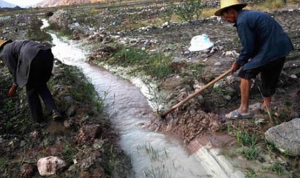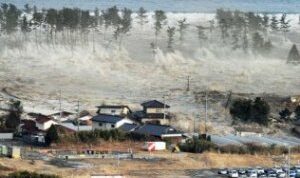 Japan is continuing to deal with a nuclear emergency as fears of food contamination grow and high levels of radioactive substances are found in seawater near the crippled Fukushima plant.
Japan is continuing to deal with a nuclear emergency as fears of food contamination grow and high levels of radioactive substances are found in seawater near the crippled Fukushima plant.
The news comes amid another setback in efforts to cool the earthquake-crippled nuclear plant, with officials spotting grey smoke coming from the roof of the No. 3 reactor.
Some workers were temporarily evacuated from the nuclear plant, 250km north-east of Tokyo, but there are reports smoke can no longer be seen rising from that reactor.
The World Health Organisation says the detection of radiation in food is a more serious problem than first expected and food contamination is not a localised problem.
Four prefectures have been singled out, but it says there is no evidence of contaminated food from Fukushima reaching other countries.
Shipments of spinach and similar vegetables will be banned and exports of milk from Fukushima prefecture will also be curtailed.
Speaking through a translator, chief government spokesman Yukio Edano maintained there was no health threat.
“For a precautionary measure we are taking these actions. Please don’t panic,” he said.
Tap water with increased radiation levels has also been detected in some towns, which WHO says is a serious concern.
Meanwhile, abnormally high levels of radioactive substances have been detected in seawater near the Fukushima plant.
The substances were sampled about 100 metres south of the facility, a Tokyo Electric Power Co. (TEPCO) official said, stressing it was not a threat to human health.
“Normally, such radioactive substances are not detected in the area,” said Naoki Tsunoda, adding that the company will continue monitoring at the same point and in other areas.
TEPCO says the level of iodine-131 is 126.7 times higher and caesium-134 is 24.8 times higher than government-set standards.
The company has confirmed power cables have been connected to all six nuclear reactors at the stricken power plant.
A 9.0-magnitude quake and ensuing tsunami on March 11 devastated Japan’s north-eastern Pacific coast, knocking out the plant’s cooling systems and leaving it on the brink of a catastrophic meltdown.
Helicopters and fire trucks have been deployed to pour water over heating fuel rods at the plant since Thursday.




